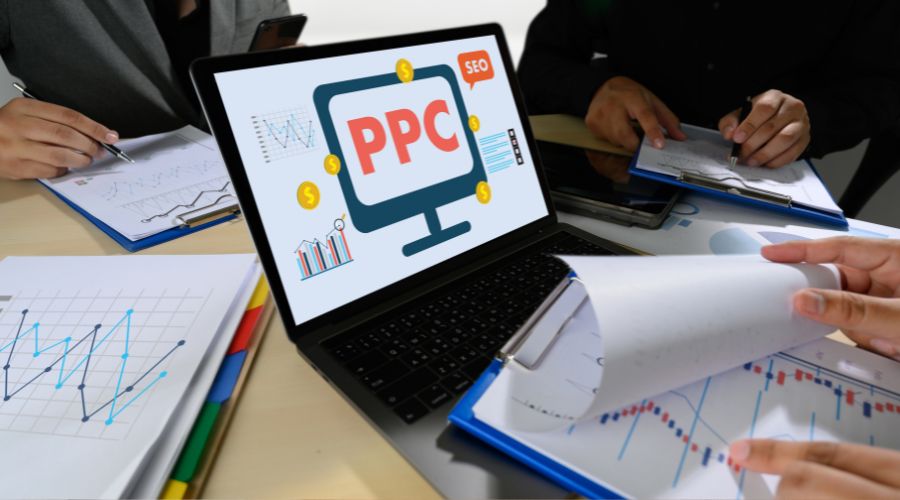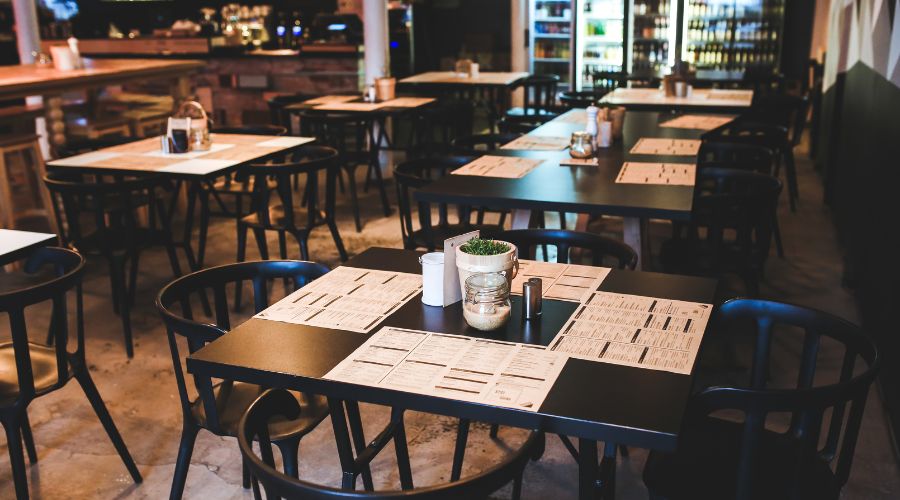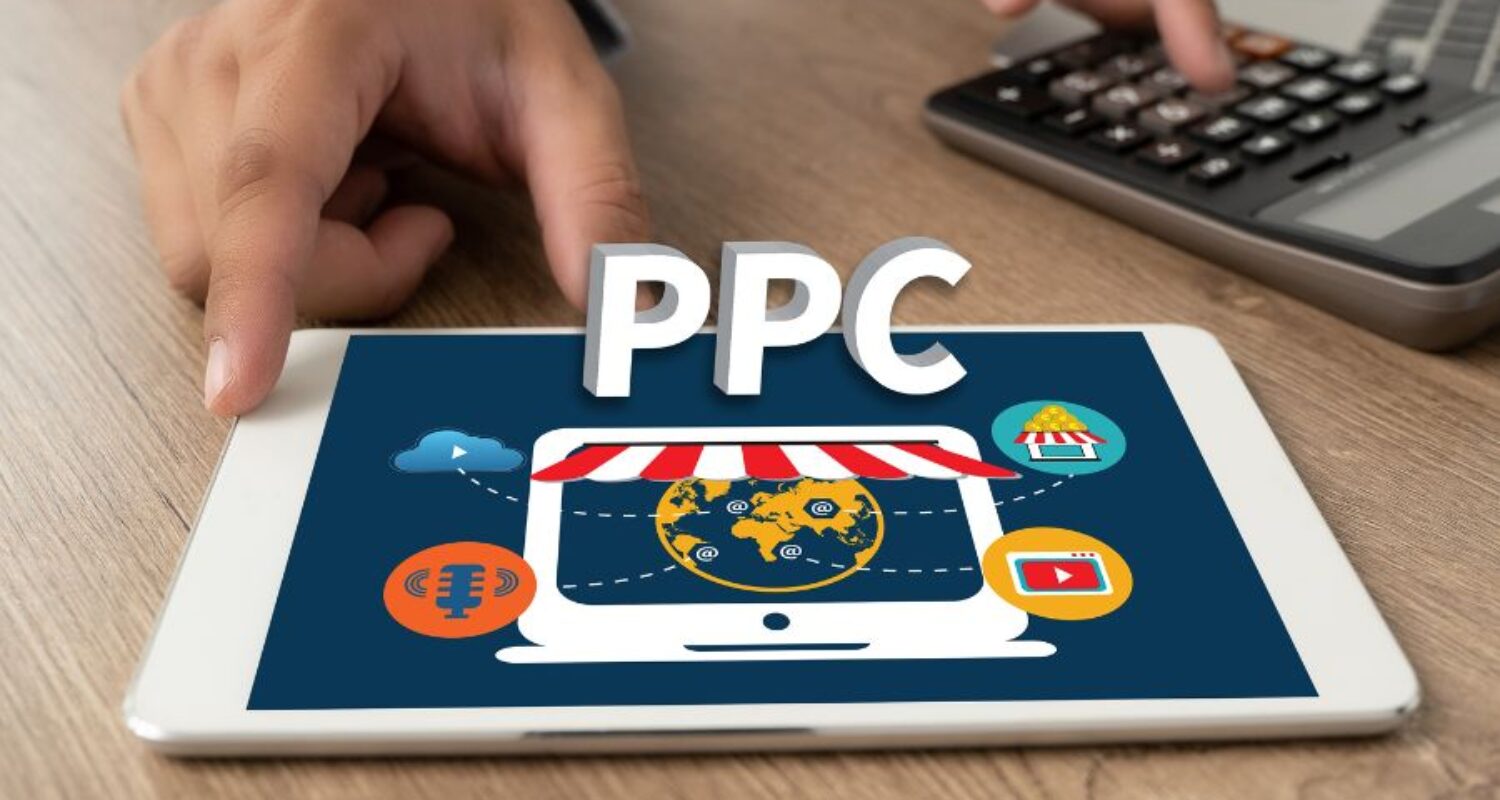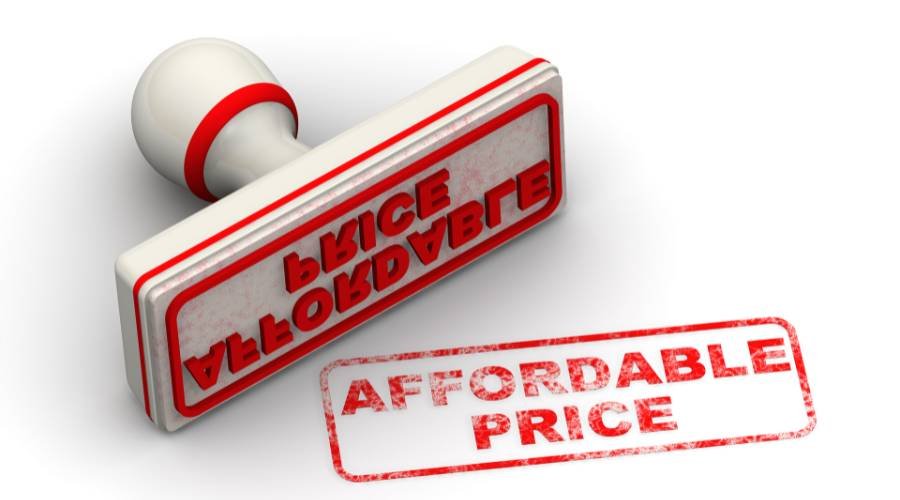If you own a restaurant in Australia, you’re always looking for ways to draw in more customers. Pay-per-click (PPC) advertising is a great way to do this. This guide will show you how PPC can change the game for your restaurant.
PPC lets us target people who are looking for places to eat. We can use search engines and social media to make ads that grab people’s attention. This brings hungry Australians to your doorstep.
Whether you’ve been running a restaurant for years or are just starting, learning PPC can be a game-changer. We’ll cover everything from the basics of PPC campaigns to how to pick the right keywords and manage your budget. You’ll get the tools and knowledge to succeed in the competitive Australian dining scene.
Key Takeaways:
- PPC advertising is a powerful tool for restaurants to boost dining traffic and increase reservations.
- Strategically crafted PPC campaigns can target potential customers actively searching for dining options in your local area.
- Leveraging the power of search engines and social media platforms can help your restaurant stand out and attract more diners.
- Proper campaign setup, keyword selection, and budget management are crucial for maximizing the ROI of your PPC efforts.
- Tracking and analyzing key PPC metrics can help you continuously optimize your campaigns for better results.

Understanding PPC for Restaurants: A Complete Guide
As restaurant owners, we know how crucial it is to reach and engage with potential diners. Pay-per-click (PPC) advertising is a powerful tool for boosting our visibility and driving more traffic. This guide will cover the key parts of successful restaurant digital advertising campaigns. We’ll also explore why restaurant search engine marketing is vital today and the benefits of digital ads in the food industry.
Key Components of Restaurant PPC Campaigns
Creating an effective PPC campaign for our restaurant needs a strategic plan. This includes choosing the right keywords, writing compelling ad copy, and managing bids. By focusing on these areas, we can ensure our ads reach the right people, grab their attention, and bring them to our restaurant.
Why PPC Matters for Modern Restaurants
In today’s digital world, restaurant digital advertising is key for staying competitive. PPC lets us target specific customers, serve personalized ads, and measure our marketing’s impact. By using PPC, we can stay ahead, adapt to changing consumer habits, and grab our target diners’ attention.
Benefits of Digital Advertising in the Food Industry
Investing in restaurant search engine marketing brings many benefits. It boosts our visibility, increases brand awareness, and offers measurable ROI. Digital advertising helps us reach new heights and connect with our audience in meaningful ways.
“PPC advertising has been a game-changer for our restaurant. It has allowed us to precisely target local diners, showcase our unique offerings, and drive a steady stream of customers through our doors.”
By mastering PPC for restaurants, we can open up a world of opportunities. Join us as we explore strategies and best practices to boost your restaurant’s digital advertising.
Getting Started with Google Ads for Your Restaurant
As a restaurant owner in Australia, using restaurant Google ads and PPC for restaurants can change your game. Google Ads is a top digital ad platform. It has tools to help you reach local diners and bring more visitors to your place.
To start, create a Google Ads account. It’s easy and fast to do online. After setting up your account, choose the campaign type that fits your restaurant best. Options include location-based ads and keyword-driven ads to reach customers searching for restaurants like yours.
- Define your advertising goals: Are you aiming to boost brand awareness, increase reservations, or more takeout orders? Knowing your goals helps you make your campaigns more effective.
- Conduct keyword research: Find out what search terms your target audience uses to find restaurants like yours. This ensures your ads reach the right people at the right time.
- Craft compelling ad copy: Your ad’s headline, description, and call-to-action should grab attention and persuade people to click and learn more about your restaurant.
- Optimize your landing page: When users click on your ad, they should land on a well-designed page. This page should highlight your restaurant’s unique offerings and make it easy for them to take action, like making a reservation or placing an order.
By following these tips and keeping an eye on your restaurant’s Google ads and PPC for restaurant campaigns, you can maximize digital advertising. This can help attract more diners and grow your restaurant’s success.
Creating Compelling Restaurant Ad Copy That Converts
In the world of restaurant online marketing and digital advertising, making great ad copy is key. It can draw in new customers or leave them behind. Restaurant owners know how important it is to stand out and grab the audience’s attention.
Writing Headlines That Drive Clicks
The headline is the first and most important part of your ad. It must grab attention, be informative, and make people want to learn more. Use keywords like “restaurant” and “dining” to help with digital ads. Also, highlight what makes your place special or any current offers.
Crafting Irresistible Call-to-Actions
Your call-to-action (CTA) is the last step to turn potential customers into real ones. Make CTAs like “Book Your Table Now” or “Discover Our Mouthwatering Menu.” Use words that make people want to act fast and now.
Highlighting Unique Selling Propositions
What makes your restaurant different from others? Find your unique selling points (USPs) and show them off in your ad. This could be your award-winning food, top-notch service, or a unique dining experience.
| Key Elements of Effective Restaurant Ad Copy | Examples |
|---|---|
| Attention-grabbing headlines | “Satisfy Your Cravings at Our Award-Winning Restaurant” |
| Compelling call-to-action | “Reserve Your Table Today for an Unforgettable Dining Experience” |
| Highlighting unique selling propositions | “Discover the Best Locally-Sourced Ingredients in Town” |
By using these elements in your online marketing and digital ads, you can make ad copy that speaks to your audience. It will bring more people to your restaurant. The goal is to grab attention, inspire action, and show off what makes your restaurant unique.
Strategic Keyword Selection for Restaurant Advertising
Choosing the right keywords is key for restaurant ads on search engines and PPC. It helps your ads reach the right people at the right time. This brings more diners to your restaurant.
To find the best keywords for your PPC, use various tools and methods. Look at your competitors’ ads and rankings. Tools like Google Ads Keyword Planner and SEMrush can also help. They show keywords with lots of searches and a strong intent to buy.
- Use location-based keywords like your city or neighborhood. This attracts diners looking for places to eat nearby.
- Include keywords that show what makes your restaurant special. This helps you stand out and attract customers looking for a specific experience.
- Also, use general keywords like “restaurant”, “dining”, “food”, and “bar”. These catch people in the early stages of looking for a place to eat.
| Keyword | Average Monthly Searches | Competition | Commercial Intent |
|---|---|---|---|
| “Best Italian restaurants near me” | 2,400 | High | Very High |
| “fine dining Melbourne” | 1,900 | High | High |
| “casual dining restaurants” | 5,400 | Medium | Medium |
By picking the right keywords for your PPC, you can get more visibility and reach your audience. This leads to more customers coming to your restaurant. Keep researching and refining your keywords to stay ahead.
Maximizing ROI with Facebook and Instagram Ads
In Australia, reaching local diners is key for restaurants. Social media like Facebook and Instagram can change the game. They help us get more customers and boost our profits.
Targeting Local Diners Effectively
Facebook and Instagram ads let us target our audience well. We can find people who live nearby and like our food. This way, we spend our ad budget wisely and reach the right people.
Creating Visual Ad Content That Stands Out
Eye-catching visuals are vital in restaurant ads. We use Facebook and Instagram to show off our food and atmosphere. Our goal is to grab attention and make people want to visit us.
Utilizing Story Ads and Reels
Story ads and Reels are great for restaurants in Australia. They let us share our story and special deals. This way, we connect with our audience and get more people to visit.
Mastering Facebook and Instagram ads is crucial for restaurants. It helps us reach local diners, increase reservations, and boost profits. Our focus on personalized, engaging ads will keep our restaurant thriving.
Local Search Advertising Strategies for Restaurants
In Australia, reaching local diners is key for restaurant owners. Local search ads are vital for our online marketing. They help us stand out and attract the right customers with location-based targeting.
We optimize our Google My Business to boost local visibility. Keeping our info up-to-date, like hours and menu, helps. It makes it easier for people to find us.
Using location extensions in Google Ads is another tactic. They show our address, phone, and map in ads. This makes it easy for users to find us, increasing our foot traffic.
We also target “near me” searches. This helps us reach people looking for restaurants nearby. By optimizing our ads for these searches, we become the top choice for a quick, tasty meal.
Our restaurant’s local advertising and restaurant online marketing strategies have improved our visibility. We attract new customers regularly. Staying updated with digital marketing trends is crucial for success.
Budget Management and Bid Optimization
Restaurant owners face challenges in restaurant paid advertising and PPC for restaurants. Managing budgets and optimizing bids are key to getting the most out of your investment. We’ll look at ways to set budgets, understand cost per click (CPC), and adjust bids for peak hours in Australia.
Effective budget management and bid optimization are crucial components of maximizing the return on investment for restaurant social media advertising. When it comes to platforms like Facebook and Instagram, understanding how to allocate your budget wisely can significantly impact the overall success of your campaigns. Start by determining a clear budget based on your restaurant’s marketing goals, whether it’s increasing foot traffic, promoting a new menu item, or building brand awareness. By setting a defined budget, you can analyze the cost per click (CPC) and identify which types of ads—such as restaurant Facebook ads or restaurant Instagram ads—yield the best results.
Once your budget is established, it’s essential to monitor the performance of your ads continuously. This monitoring allows you to see which demographics and ad placements are generating the most engagement, helping you fine-tune your strategy. During peak hours, when potential customers are most active on these social media platforms, consider increasing your bids. By doing so, you can enhance the visibility of your ads, reaching more users who may be interested in dining at your restaurant.
In addition to adjusting bids during peak times, leveraging data analytics can further refine your approach. Analyze metrics such as engagement rates and conversion rates to determine if your ad spend is translating into actual customers. Implement A/B testing on different ad creatives and formats to see what resonates the most with your audience. Whether you’re showcasing mouth-watering dishes through restaurant Instagram ads or targeting local food enthusiasts with restaurant Facebook ads, the ability to adapt and optimize your campaigns in real-time will lead to more effective budget management and ultimately, greater success in your advertising efforts.
By focusing on maintaining a flexible yet structured budget while continually optimizing bids and ad placements, you will harness the full potential of your restaurant’s social media advertising. This strategic approach can turn your advertising budget into a powerful tool for growth and customer engagement, ensuring that your restaurant stands out in a competitive industry.
Setting Daily and Monthly Budgets
Setting a realistic budget for your restaurant’s paid advertising is crucial. Think about your target audience, competition, and marketing goals. A good budget helps you use resources wisely and avoid spending too much.
Understanding Cost Per Click
The cost per click (CPC) is vital in PPC for restaurants. It shows how well your ads are doing and helps you make bid changes. Knowing the average CPC in your field helps you set a competitive yet profitable bid for your restaurant.
Adjusting Bids for Peak Dining Hours
Showing your restaurant during peak hours can be a big advantage. By setting bids for these times, you’re more likely to reach people ready to dine. This targeted approach can greatly increase your restaurant’s traffic and sales.
| Metric | Description | Importance |
|---|---|---|
| Daily Budget | The maximum amount you’re willing to spend on your restaurant’s paid advertising campaign per day. | Ensures you don’t overspend and stay within your overall marketing budget. |
| Monthly Budget | The total amount you’ve allocated for your PPC for restaurant campaigns within a given month. | Helps you plan and manage your marketing expenses effectively. |
| Cost Per Click (CPC) | The amount you pay each time someone clicks on your restaurant’s ad. | Provides insights into the efficiency of your ad campaigns and guides bid adjustments. |
By using these budget and bid strategies, you can make your restaurant’s paid advertising and PPC for restaurant campaigns more effective. This will help increase your restaurant’s visibility and profits in Australia.

Measuring Success: Key PPC Metrics for Restaurants
As a restaurant owner, it’s key to know the important KPIs for your digital ads. By watching these metrics closely, we can improve our restaurant search engine marketing plans. This helps us get better results. Let’s look at the main PPC metrics for tracking our restaurant’s digital advertising success.
One key metric is click-through rate (CTR). It shows how often people click on your ads compared to how many times they see them. A high CTR means your ads are connecting well with your audience.
Another key metric is conversion rate. It shows how many users do what you want them to do, like book a table or order food, after clicking on your ad. This helps us see if our landing pages and campaigns are working well.
- Cost per click (CPC): This shows how much we pay for each ad click. It helps us manage our budget and adjust our bids.
- Impression share: This shows how often our ads are seen compared to when they could be seen. It helps us find ways to show our ads more.
- Return on ad spend (ROAS): This calculates how much money we make from ads compared to what we spend. It shows if our restaurant’s digital advertising is profitable.
By watching these key metrics, we can make smart choices to improve our restaurant search engine marketing plans. This ensures we reach the right customers and get the most from our ads.
Conclusion
Implementing a strategic PPC campaign can change the game for restaurants in Australia. It helps you reach your target audience, increase dining traffic, and boost your profits.
We’ve covered the basics of restaurant PPC campaigns, how to write compelling ad copy, and how to use social media. This guide is your roadmap to digital advertising success. Focus on social media ads and optimize your PPC to stay ahead and attract local diners.
Success in PPC for your restaurant is a continuous journey. Always be ready to adjust and improve. Analyze your data and refine your strategy to get the most out of your investment. With the right approach, you can grow your online presence and attract new customers, setting your business up for success.
FAQ
What is PPC for restaurants and how can it benefit my business?
PPC, or pay-per-click advertising, is a digital marketing strategy. It can greatly increase dining traffic and reservations for restaurants in Australia. By using PPC campaigns, we can target local diners and showcase your unique offerings.
What are the key components of a successful restaurant PPC campaign?
A successful PPC campaign includes targeted keywords, compelling ad copy, and strategic ad placement. We also track performance closely. These elements help create campaigns that resonate with your audience and deliver results.
Why is digital advertising so important for modern restaurants?
Online advertising is key for restaurants today. It lets them reach and engage with customers. Digital platforms offer great targeting, real-time data, and the chance to optimize impact campaigns.
What are the benefits of using Google Ads for my restaurant?
Google Ads is a powerful tool for restaurants. It connects you with local diners through Google’s vast user data and targeting options. This means your ads can show up when people are searching for dining options near you.
How can I create compelling ad copy that drives conversions for my restaurant?
To create effective ad copy, focus on grabbing attention with headlines and calls to action. Highlight what makes your restaurant special. By understanding your audience, we can craft ad content that resonates and encourages action.
What are the best strategies for targeting local diners on social media?
We use platforms like Facebook and Instagram for targeted social media ads. By targeting local diners and using engaging ad content, we can drive more customers to your restaurant.
How can I optimize my PPC budget and bids to maximize ROI?
Effective budget management and bid optimization are key to a positive ROI. We’ll discuss setting budgets, understanding CPC metrics, and adjusting bids for peak hours. This ensures you get the most from your PPC campaigns.
What are the key metrics I should be tracking for my restaurant’s PPC campaigns?
To measure success, track impressions, clicks, CTR, conversion rate, and ROAS. Analyzing these metrics helps us refine your campaigns for better results.




